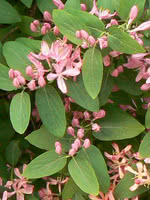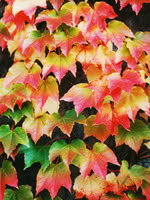Mon-Fri 9am - 5pm Mountain time
Twining Honeysuckle vs Boston Ivy
Lonicera dioica
Parthenocissus tricuspidata
CUSTOM GROW
NOT AVAILABLE THIS SEASON - MIGHT RETURN
Twining Honeysuckle is a vine native to the forests of Canada and the United States.
It can often be found winding up the bark of large trees or spreading out as a ground cover where no supports are present. You will love the attractive, yellow-orange flowers with pink centers which turn into red, inedible berries.
Consider Twining Honeysuckle when trying to achieve a natural, spreading, unkempt look for your garden.
Boston Ivy is an elegant, climbing vine that is often seen as a decorative addition to the sides of buildings. Unlike other climbing vines, this vine does not need a support to grow on. Instead, it clings to surfaces with holdfasts located at the tendril ends.
Boston Ivy is excellent for covering walls, trellises, arbors or fences, but can also be grown on the ground. Don't plant this vine against wood walls, shingle walls, gutters, or shutters as the holdfasts can cause damage over time. This variety will grow as tall and wide as the structure it is grown upon, so make sure you plan your site accordingly.

